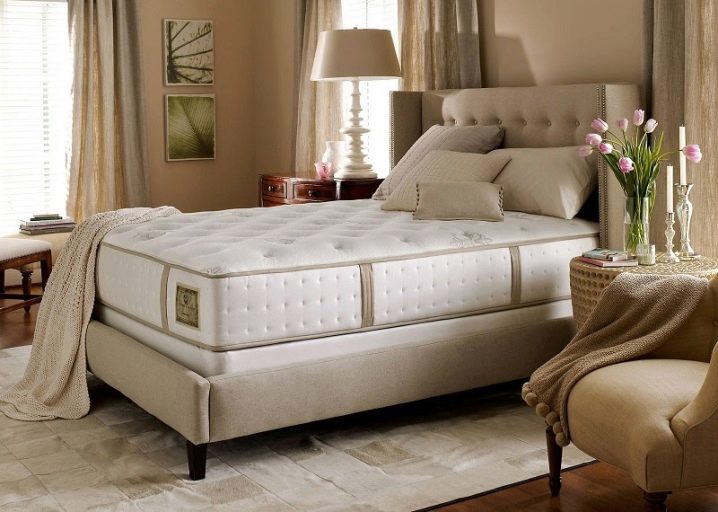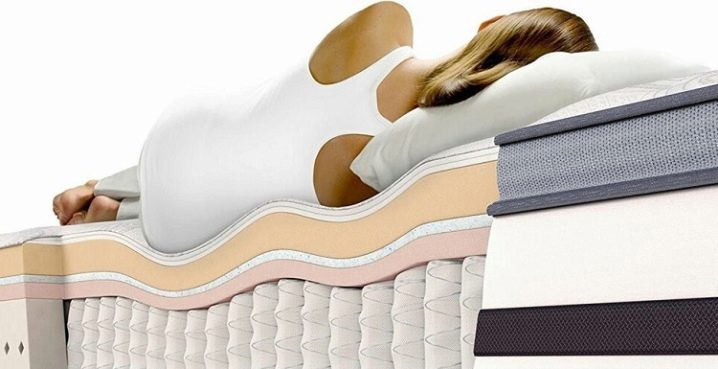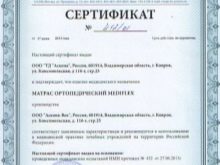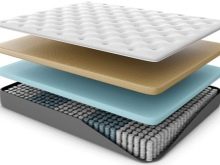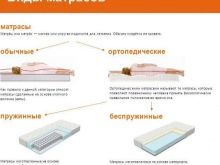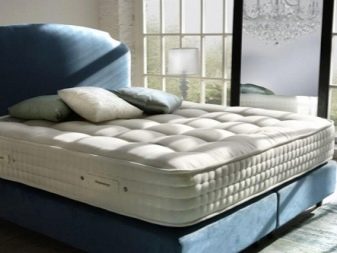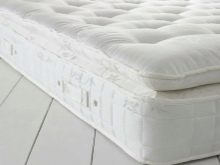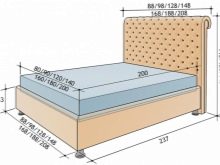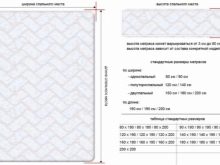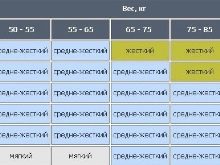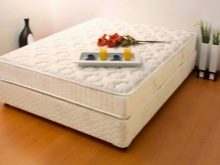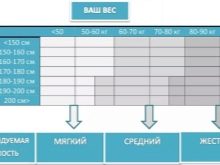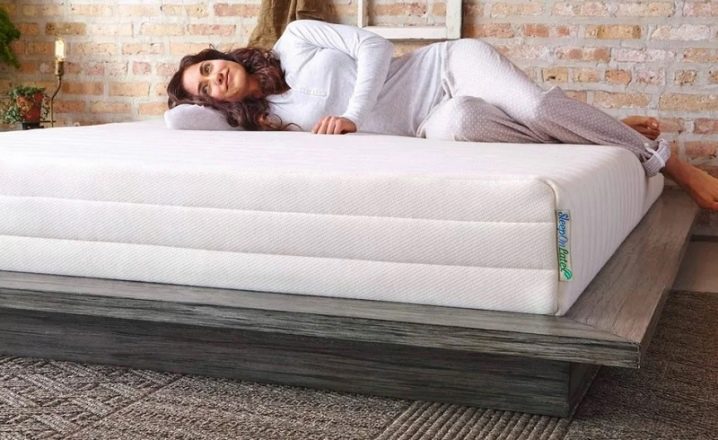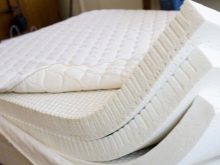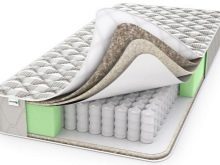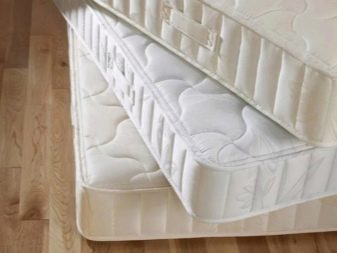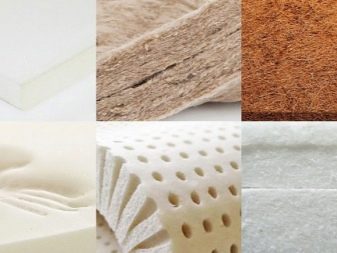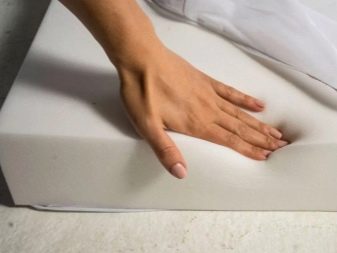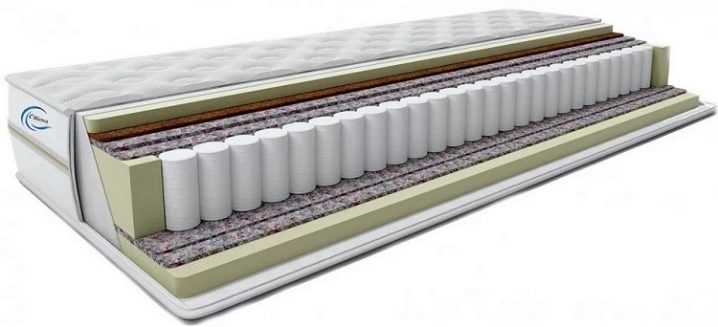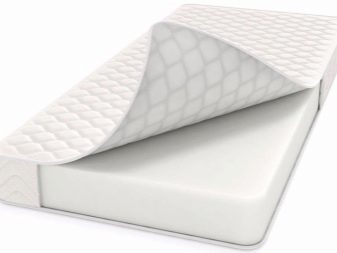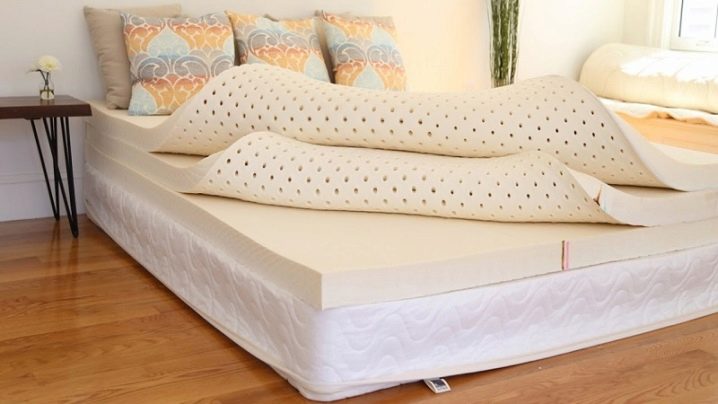How to choose an orthopedic mattress?
Orthopedic mattresses are products designed to evenly distribute the contact load on the spine during rest. These products are developed with the participation of specialists who study and treat diseases of the back and spine. It is for this reason that mattresses have become a necessary and significant part of the program for the complex therapy and prevention of the occurrence of musculoskeletal disorders.
Size selection
Since experts share the concepts of "orthopedic mattress" and "mattress with orthopedic properties", in order to avoid confusion, we will define their meanings. Orthopedic properties are called conditions that allow the spine of the resting person to have a physiologically correct position, anatomically correct weight distribution.
Orthopedic mattresses - accessories with special medical certificates... They are recommended by experts in order to prevent specific diseases of the musculoskeletal system, to alleviate a person's condition and avoid the progression of the disease.
Speaking about the size of orthopedic mattresses, they usually mean that their dimensions correspond to the size of the beds. The product for the bed should not be wider than the base of the bed structure in width: the mattress overhang on the sides is unacceptable, as well as smaller sizes. The same goes for choosing the length of the mattresses. It follows that you first need to purchase a bed, and only then buy a mattress.
The best option would be to buy both a bed and a mattress at the same time, when in practice you can choose products that match each other.
Now let's talk in more detail about the overall parameters.
- The width of the mattresses are single and double... Their sizes are variable, they fluctuate in the range of 80-200 cm. Mattresses of other dimensions are made on individual orders. The standard width for single items is 80 cm, and for double items, 140 cm. In practice, it is advised to select items of somewhat large sizes (+ 10-15 cm). The final choice is made individually.
- The most popular mattresses in length are 200, 195 and 190 cm. The first size is universal for double beds. Atypical sizes (120-140 cm) are rare. For a more comfortable stay, it is better to choose mattresses with a length exceeding the height by 10 centimeters or more.
- The universal diameter for round mattresses is 220 cm (double bed). Other parameters are rare.
The thickness of mattresses is a relevant parameter, because it affects both the rigidity of the product and the comfort of the sleeper.... Thin products (no thicker than 9 cm) are intended for babies under 3 years old, and their maximum height should be 10 cm.Children at the age of 7 are recommended products with a height of at least 11 cm. development.
For adults, mattresses with a thickness of at least 15-16 cm are recommended. The overwhelming majority of springless orthopedic products have the specified thickness. The smallest thickness of products with independent spring devices is 18 cm. Comfortable elite models can be up to 40 cm high. The most popular orthopedic mattresses are products with a thickness of 15-25 cm.
It is important to understand that the use of mattresses that are not the size of the bed base leads to an incorrect distribution of the load and rapid wear of the products.
How to choose the stiffness?
The degree of rigidity of the product affects sleep comfort as well as muscle sensation.... Too thin mattresses create a feeling of discomfort, inconvenience. That is why the majority of consumers buy products of medium hardness. The most rigid models are advised for people with pathological defects of the spine, hernias, osteochondrosis.
The degree of rigidity is divided into:
- low;
- less than average;
- medium;
- above average;
- high.
Low-hardness products are usually made from natural latex, foam rubber or cotton wool. They fit people with a small mass or as a temporary option. But if latex has orthopedic qualities, then the other two materials do not. It is not recommended to rest on such products for people of average weight.
Medium-hard products are made from polyurethane foam, latex, struttofiber and others. They have a pronounced orthopedic effect. This category also includes products with independent spring blocks, although they can be of different stiffness.
Highly rigid products are made from coconut fibers and other rigid stuffing (struttofiber and composite components). They are often referred to as healing accessories. The exception is people over 50 years old, who are not recommended to rest on such hard surfaces.
Other criteria of rigidity are intermediate, more subtle. They can be clarified (as well as the maximum weight for a mattress) in the accompanying documents for the product or from a sales consultant.
Other selection criteria
In order to choose the right orthopedic mattress, it is important to be well versed in the selection criteria, filler materials, design features of products, follow the recommendations of doctors.
Filler material
Filler materials affect the firmness of mattresses, comfort, hygiene and environmental friendliness of rest. Often, in the production of mattresses, technologies of mixing different fillers are used. The variety of products on the market can satisfy all tastes and wallets.
Natural fillers
First, let's look at natural options for fillers.
- Latex produced from the juice of hevea, processing it to the state of a special foamy mass. It has excellent anatomical qualities, is durable and hypoallergenic, but it is expensive.
- Coconut coir serves as a material for the manufacture of hard mattresses, since it has a high density. Often such bedding is used for newborns. The material is also used as an interlayer. Coira does not stimulate allergic manifestations, prevents the spread of bacteria, quickly evaporates moisture, does not give in to decay, but its cost is high.
- Horsehair in terms of quality characteristics, it resembles the previous filler, but has great elasticity and resilience. It is used in the production of luxury items.
- Sisal - fibers made from agave leaves. The product is durable and firm, breathes well and evaporates moisture. Usually mixed with other fillers.
- Wool used in combination with other materials, providing warmth.
- Batting Is a cotton filler and is rare today. Most often it is used as a layer to soften the mattress. Batting crumples, does not evaporate moisture well, dries for a long time, does not provide proper support. It's cheap.
Artificial
Of artificial fillers, it is recommended to pay attention to the following options.
- Artificial latex (polyurethane foam, orthopene) in its parameters is similar to natural, but its cost is lower. The life of the artificial analog is shorter as it dries and delaminates.
- Memoriform... The raw material for its production is polyurethane foam, which has excellent orthopedic qualities and memory effect. It is able to conform to the shape of the body of the resting person, providing the desired degree of relaxation and support. After that, the product quickly regains its original shape.
- Based polyurethane foam other foamy packing options are also produced. To adjust the properties required by the product, various additives are added to the raw materials. These materials are characterized by excellent performance characteristics and serve for a long time.
- Packings from holofiber and struttofiber differ in structure. In the first version, the fibers are arranged randomly, in the second - vertically. Materials can be of different hardness. In addition, they are hypoallergenic, breathable, durable, and are able to quickly regain their shape after removing the load.
Design
Structurally, mattresses can vary greatly.
Spring loaded
Spring products are divided into two groups: classic and with independent spring devices. Classic versions have been known to us for many years; they are equipped with interconnected springs that form the main properties of mattresses. But they cannot boast of orthopedic qualities, since the spring elements are interconnected. That is, when one element is deflected, the other is also deformed. Spring products became famous for their ability to creak not quite melodiously, since during operation they rub against each other. In addition, such products often become a shelter for a linen mite. Dust accumulations are also typical for them. Spring mattresses are quite affordable.
Pros:
- high degree of reliability;
- affordable price tag.
Minuses:
- no orthopedic qualities;
- during operation, dust, allergens and bacteria accumulate;
- the appearance of squeakiness.
Products with independent spring systems are simple and structurally flawless. Here, the individual springs move independently, being in their packaging, reinforced with some kind of padding. The result is a wear-resistant product with excellent orthopedic qualities, with up to 200-300 springs per 1 m2. This provides the correct support for the resting spine. Such products do not creak, they are designed for vacationers of different age groups and weights, since the degree of their rigidity has average values. Experts recommend them for use from 12 years old.
Pros:
- the presence of orthopedic qualities;
- reliability;
- excellent comfort.
Minuses:
- high cost.
Springless
Springless products are made from polyurethane foam, struttofiber, latex, sea grass, horsehair, coconut fibers and others. The absence of spring elements makes these products very wear-resistant and durable accessories that can withstand significant loads. Exceptions in this series are products made from coconut coir (needle-punched version), since its surface can burst and crumble.
Such products are produced in single and multi-layer versions (with several fillings), which contributes to the selection of the qualities required for the mattress. Springless versions are also made from composite materials.
For example, products made of struttofiber are popular, in the fabric of which goat fur is braided, which gives the product the ability to store heat perfectly. Structofiber in combination with flax fibers allows the production of "cold" versions of products.
Springless products with a memory effect from the memorix, memorial forms and others have also taken their special niche. These types of padding with a foamy texture tend to take the form of a person resting on it, and then recover within a few minutes. The padding creates ideal sleeping conditions. However, at too low room temperatures, the packing becomes unnecessarily rigid.
Pros:
- long service life of springless products;
- excellent orthopedic qualities;
- wide range of stiffness.
Minuses:
- high price tag for some products made from natural latex, coconut fiber, materials with memory;
- insufficient softness: individual spring products will be much softer than their springless counterparts.
The quality of the parties
The quality of sleeping accessories largely depends on the condition of their surfaces. Therefore, mattresses are covered with special covers and mattress toppers, which are made from pleasant to the touch and dense materials: natural cotton or linen fabrics. There are products with special antibacterial or moisture resistant impregnations. This is especially important for children. Covers and mattress toppers are produced removable and non-removable.
In removable covers, the fabric base often does not fit very tightly to the base of the mattress, because of this it shifts and forms uncomfortable folds. Non-removable covers are attached to the base as tightly as possible and do not move. The impossibility of washing them is easily compensated by the mattress covers. In some cases, mattress covers are purchased with fillers that adjust the degree of rigidity of the main product.
The degree of stability of the edges of the mattress, which lends itself to deformation, if they are often sat on, is also important. Caring manufacturers specially reinforce the edges with frames made of polyurethane foam or a metal bar.
Advice
Summarizing the above, let's turn to a number of tips for choosing orthopedic mattresses:
- people with heavy weight are advised to take a closer look at rigid springless products or models with rigid springs;
- hard mattresses are a solution to the problem of preventing the onset of scoliosis in children;
- with an average weight of a person, products with blocks of independent springs and interlayers of natural latex are most effective;
- thin people are recommended to rest on soft products without coconut coir;
- for the elderly, soft springless options are best;
- if you rarely toss and turn during your rest, then you will be quite satisfied with products with a memory effect;
- if you are concerned about lower back pain, look at mattresses of medium hardness, which will support the lower back well;
- for intercostal neuralgia, scoliosis and diseases of the upper spine, select rigid structures.

